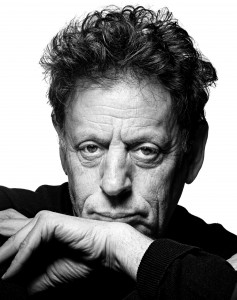WESTMINSTER COLLEGE OPERA STUDIO, The Photographer, Vieve Gore Concert Hall, March 28
Philip Glass is among America’s most famous and prolific composers, living or not. Early in his career, he composed in a strict minimalist style after being influenced by composers like Terry Riley and Steve Reich. In early works like Music With Changing Parts and Music in 12 Parts Glass relied heavily on repetitive structures with changes often coming in the form of augmentation and/or diminution of those structures, usually not adhering to common meters. While these and other early works were important in Glass’ development and in the development of the minimalist style, it wasn’t until Glass began to embrace common meters that his signature and popular style was forged.
Glass first rose to prominence with his opera Einstein on the Beach, and has regularly composed for the opera ever since. His operas often focus on the biographies of notable historical figures including Gandhi, Galileo and Kepler. The biographical focus of Westminster College’s production of Glass’ The Photographer is a less known historical figure of tremendous importance named Eadweard Muybridge. It’s often argued that Muybridge’s experiments with the rapid capturing of many photos in sequence was the first cinematic technology, and led to the moving picture and modern day cinema.
Westminster College has been providing quality chamber music concerts for years, usually featuring distinguished faculty performers and other professionals from the community. The scale of the production of The Photographer required a new level of ambition for the college. Musically, it requires a chamber orchestra and choir, however the work is a truly multimedia production because it also requires light projections of Muybridge’s work during the entire second act and a dance performance during the third. To realize the ambitious score and the multimedia elements the production director, Michael Chipman, assembled a collection of students and faculty from the college representing a variety of academic disciplines.
Considering the ambitious nature of the production and the inclusion of student performers, the performance was a smashing success. The projection and dance elements worked especially well thanks to projectionist Talus Baddley (a student) and choreographer Ashley Mott and her ensemble of talented dancers. Aside from a couple of minor synchronization problems within the ensemble, the music was also well performed. Glass’ music is deceptively difficult to perform, especially when ensemble works like this one reach into the higher tempos. The kaleidoscopic aural effects of Glass’ musical patterns require machine-like accuracy with the pulse in order for the full effect to be heard. Conductor Brandon Derfler did an admirable job of keeping the ensemble balanced and together, though sometimes I was left wanting more from the biggest crescendos and a little extra zip on the fastest tempos. Still, this was an admirable reading of a challenging score and a terrific staging of an important contemporary multimedia opera.

